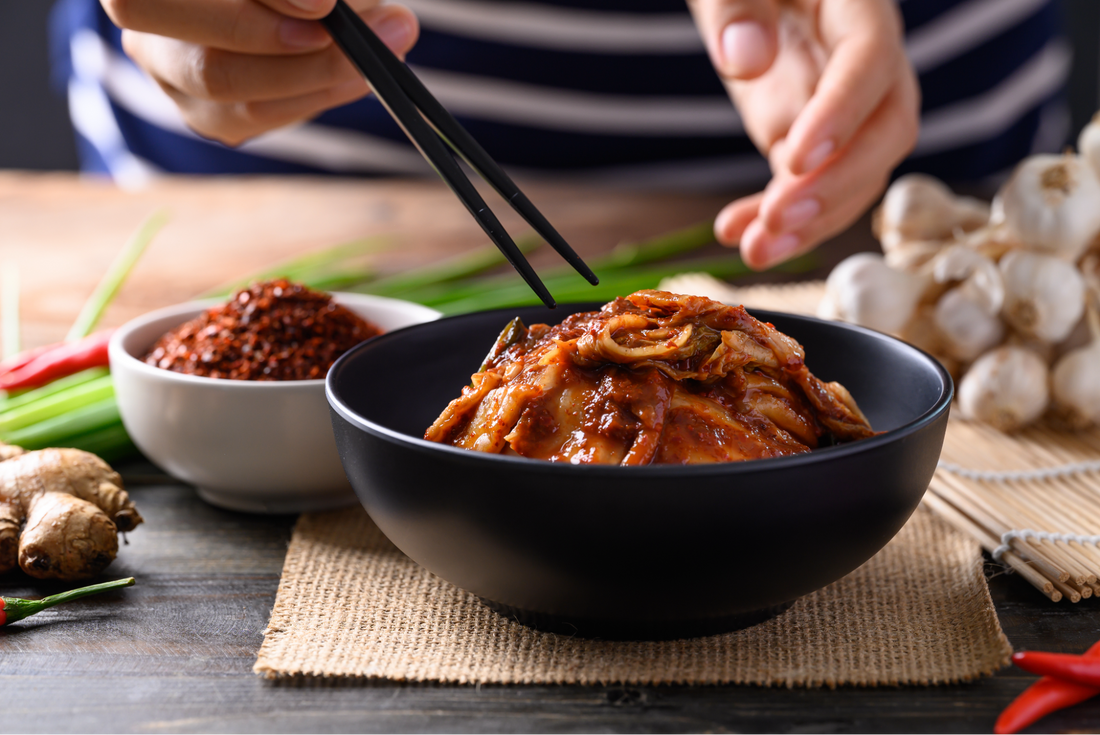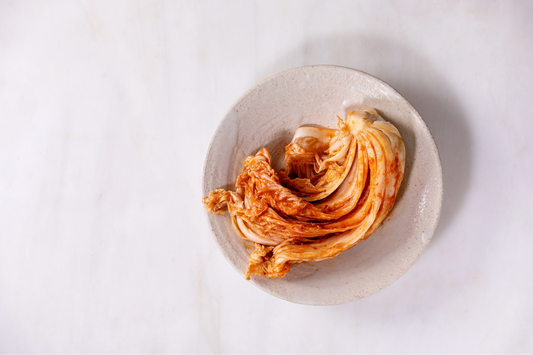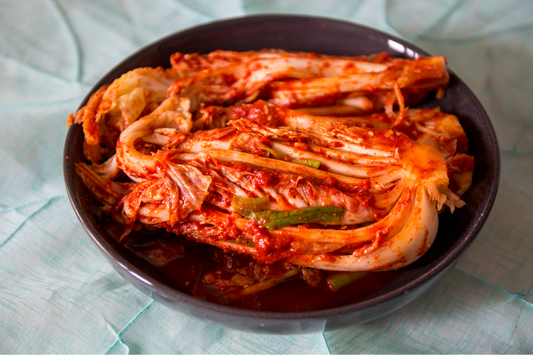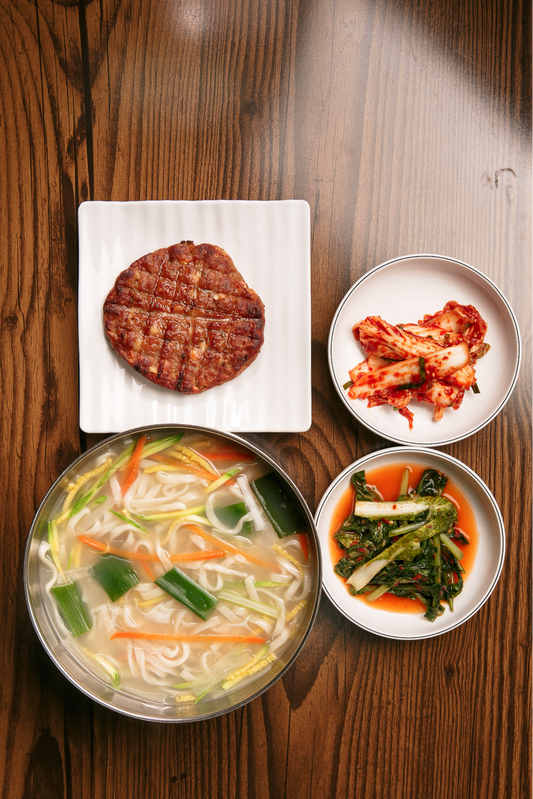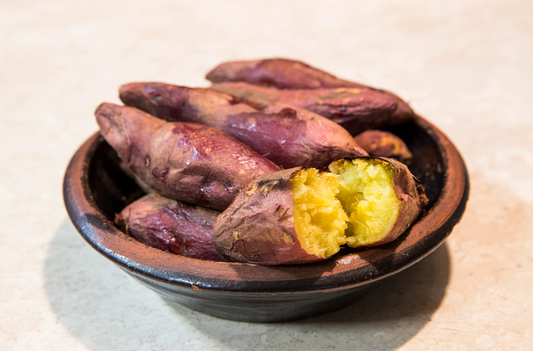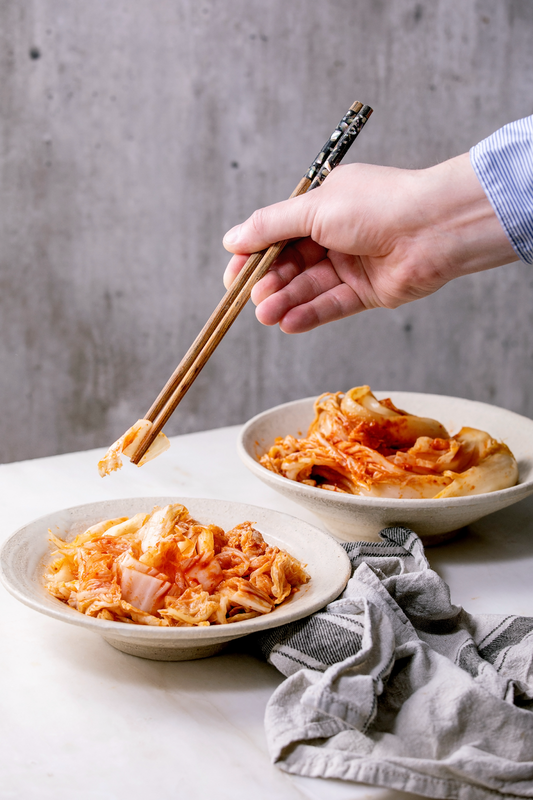Exploring traditional Korean kimchi teaches us about transformation. Flavor and aroma evolve during fermentation. This is more than preserving food; it's about witnessing a complex change. Key factors influence this process. They range from the type of cabbage to the fermentation conditions. Each choice affects the taste and smell of the final product. A guide to fermenting kimchi takes us through time, celebrating flavor changes and the microbes that make it happen.
Key Takeaways
- Kimchi, with its 200+ varieties, goes through a sensory evolution during fermentation.
- Changes in smell, color, and texture help decide the best time to eat kimchi.
- Packing fresh kimchi in jars begins its journey to intense flavor and aroma.
- Mature kimchi, used in dishes like Kimchi Jjigae, represents the peak of fermentation.
- Ingredients such as anchovy sauce affect the fermentation outcome due to their nitrogen content.
- Over weeks, typically up to 56 days, kimchi's pH, acidity, and sugar content change, transforming it.
- Grasping these elements allows for mastering kimchi fermentation, leading to an appealing final product.

Early Stage of Kimchi Fermentation
The first stage of making kimchi sets up its unique tastes and textures. It's where the magic starts for this Korean dish. Knowing how fermentation changes taste and texture helps makers perfect their kimchi.
Initial Flavor and Aroma: Characteristics of Flavor and Aroma in the Early Stages of Fermentation
Kimchi starts to get its special flavors and smells early on. This is because of the microbes working. You might notice a sweet taste and a mild sourness. These come from the sugar and the early lactic acid. Making sure you have the right spices and keep the temperature right helps these flavors grow stronger.
Signs of Fermentation: Indicators That Fermentation Has Begun
Seeing bubbles or smelling a tangy scent means kimchi fermentation is on the right track. These signs show that good microbes are at work. By watching for these signs, makers can ensure they're fermenting kimchi correctly. Keeping the right temperature and salt level is important for great taste. The perfect pH level is about 4.2, so the kimchi is sour but not too much.

Mid-Stage Fermentation
As kimchi goes through mid-stage fermentation, many changes happen. These include changes in the smell, texture, and overall taste of kimchi. This stage is busy with lots of microbes working together. They live well under certain fermentation environment conditions. These microbes change how kimchi feels, smells, and tastes.
Change in Flavor: How Flavor Changes as Fermentation Progresses
The flavor of kimchi gets more complex with time. At first, it's sweeter. But, as it ferments, the kimchi starts to taste tangy and savory. This change happens because the microbes change sugars into lactic acid and other stuff.
Change in Aroma: Aroma Changes in Kimchi During Mid-Stage Fermentation
The smell of kimchi changes a lot during this stage. It goes from fresh and lightly tangy to strong, sometimes even smelly. This happens as the bacteria work. They break down the cabbage and other parts. This is controlled by the fermentation conditions.
Change in Texture: Texture Changes Observed During Mid-Stage Fermentation
The way kimchi feels changes, too, during this stage. If it's just made, it stays crunchy. But, kimchi from stored cabbage gets softer. This is due to enzymes breaking down the cabbage cells. So, the texture changes and adds to the kimchi's quality.
Understanding these changes is key for those making kimchi. It helps them control how they make their kimchi tasty. So, watching the fermentation conditions and how the kimchi changes is vital. It helps them make great kimchi.
Full Fermentation
Full fermentation is key in making traditional Korean kimchi. It's essential for both the kimchi's safety and its deep flavors and textures. Through fermentation, the kimchi changes, bringing out bold flavors and more nutrients.
Final Flavor and Aroma
When full fermentation is reached, kimchi's taste becomes rich. It gets a mix of sour, spicy, and mildly sweet flavors. This is because of lactic acid and other compounds formed during fermentation. They help keep the kimchi and enhance its taste.
Change in Texture
Kimchi's texture changes during fermentation. Napa cabbage starts off crisp. But it softens over time while keeping some crunch. This fermentation crunchiness is a sign of well-made kimchi. It adds to the enjoyment of eating kimchi.
The knowledge of full fermentation shows its importance in creating kimchi's unique flavor and texture. It also highlights its value in Korean culture. Each batch of kimchi has its own story. This story is told through its taste and texture, which depend on the fermentation process and traditional Korean culinary techniques.

Controlling Fermentation Duration
Making kimchi is an art that involves controlling fermentation duration. This skill is crucial for both keeping the kimchi and creating unique flavors. These flavors are based on each person's personal preference in fermentation.
Adjusting Fermentation for Personal Preference: How to Adjust Fermentation Duration to Suit Personal Preferences
To adjust fermentation for personal taste, pay attention to the surroundings and what goes into the kimchi. The amount of capsaicinoid, which can range from 4 to 50.3 mg/kg, affects how lactic acid bacteria grow. This changes the taste. By adjusting these levels, you can make the kimchi spicy or sour to suit your liking.
The count of total viable and lactic acid bacteria, along with the fermentation temperature, also plays a big role. For a less strong taste, some might use lower temperatures and ferment for a shorter time. This keeps the veggies crisp and less sour.
Conditions Required for Fermentation: Environmental Conditions to Achieve Optimal Fermentation Duration
The best fermentation relies a lot on the environment, especially temperature. A range of 60°F (16°C) to 70°F (21°C) is ideal. This range is good for microbes but stops bad bacteria and mold from growing. Yet, fermenting below 58°F (14°C) or above 72°F (22°C) can spoil the kimchi.
Temperature isn't the only thing that matters. The pH, acidity, and certain amino acids also impact how fermentation goes. These elements work together. They affect the kimchi's taste, texture, and health benefits.
Understanding how long to ferment and at what temperature can make each kimchi batch unique. It's about blending personal taste with the science of cooking.

Problems and Solutions in the Fermentation Process
Kimchi, a key part of Korean food, needs fermentation to get its unique taste and texture. But sometimes, this process doesn't go as planned. This can lead to issues.
Over-Fermentation and Its Issues
The taste balance in kimchi is fine. It can get ruined if fermentation goes too far, making it too sour and soft. About 21 percent of the air is oxygen, but lactic acid bacteria ferment without much oxygen. To avoid over-fermentation, it's crucial to keep air out. This prevents too much oxygen from messing up the fermentation.
If fermentation goes on for too long, the kimchi becomes too tart. To tackle this, watch the temperature closely. It should be around 65 degrees Fahrenheit, following advice from expert kimchi makers online. If over-fermentation happens, adding radish or water might reduce the acidity and save the kimchi.
Under-Fermentation and Its Causes
Under-fermentation can occur if it's not left long enough, there's not enough sugar for bacteria, or the temperature is too low. This results in kimchi that's not tangy or crisp enough. Fixing this might mean letting it ferment longer at the right temperature or checking the saltiness. Both can help speed up fermentation.
People share their fermentation times online, from a quick 2 days to a longer 2 weeks. This varies with how they like their kimchi. By exchanging tips and tweaking methods, they solve fermentation problems. For example, a discussion with 76 comments from 57 people can reveal home remedies for fixing fermentation issues, like adjusting salt or finding the best fermentation spot. In short, overcoming fermentation problems is key to making great kimchi that's safe to eat.
FAQ
What changes can I expect in the flavor and aroma of kimchi during its fermentation stages?
Early on, kimchi gets a fresher, vibrant taste and a subtle smell. As it ferments, the taste and smell get richer and stronger. Fully fermented, it's sour and has a strong traditional smell.
What are the indicators that kimchi fermentation has begun in the early stage?
A slight bubble shows bacteria at work, changing the taste to tangy. A mild sour smell also starts to appear.
How does the flavor change during the mid-stage of kimchi fermentation?
The sweet taste fades, replaced by savory and acidic flavors. Umami becomes more noticeable due to protein breakdown.
What texture changes are observed in kimchi during mid-stage fermentation?
Mid-fermentation makes kimchi less crisp as it softens. Cabbage keeps some crunch but gets more tender.
What is the final flavor and aroma of fully fermented kimchi?
Fully fermented, kimchi has a mix of sour, spicy, and umami. The smell is strong and tangy.
How does the texture change in fully fermented kimchi?
It becomes softer. The vegetables' crunchiness is reduced, making a nice contrast with the strong flavors.
How can I adjust the fermentation duration of kimchi to suit my personal preference?
Change the temperature and humidity to modify fermentation. Higher temps for less sour, cooler for more sour flavors. Adjusting these factors helps get the flavor and texture you like.
What are the optimal environmental conditions required for kimchi fermentation?
Best conditions are 60 to 70°F (15 to 21°C) and good humidity. Keep it in a clean, ventilated area away from sunlight.
What problems can arise from over-fermentation, and how can they be resolved?
Over-fermentation makes kimchi too sour and mushy. To fix, cool it down, remove it from brine, or add fresh veggies before eating.
What are the causes of under-fermentation in kimchi, and how can it be fixed?
Under-fermentation happens with low temperature, not enough salt, or few bacteria. Warm it up, check the salt, or add starter culture if needed.
